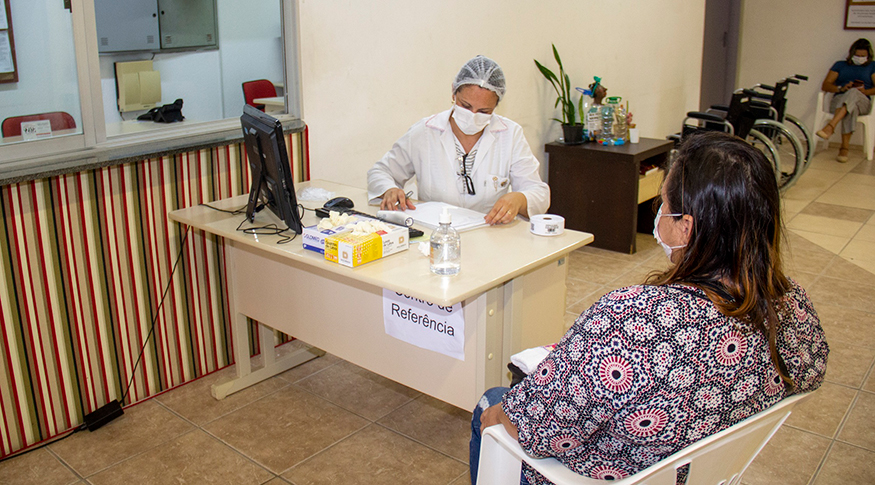PNAD COVID19
Number of people with flu-like symptoms who sought health care in the first week of June falls
June 26, 2020 02h00 PM | Last Updated: July 02, 2020 09h04 AM

The number of people with flu-like symptoms who sought medical assistance at health facilities in the first week of June fell to 2.8 million. This represents 877 thousand fewer people compared to the last week of May (3.6 million). The data are from PNAD COVID19 weekly, released today (26) by the IBGE.
The survey is a version of the National Household Sample Survey (Continuous PNAD), carried out with support from the Ministry of Health, to identify the impacts of the pandemic on the labor market and to quantify people with symptoms associated with the flu syndrome.
“Although the number of people who reported some symptom and sought care has reduced, this group has grown in percentage terms. In the first week of May, 13.7% of people with symptoms sought care. This percentage increased until reaching 17.5% in the first week of June ”, said the research coordinator, Maria Lucia Vieira.
Number of people with flu-like symptoms fall to 6.3 in the first week of June
The drop in the demand for medical care reflects the reduction in the number of people who reported at least one of the 12 symptoms investigated by the survey which are associated with the flu (fever, cough, sore throat, breathing difficulty, headache, chest pain, nausea, stuffy or runny nose, fatigue, eye pain, loss of smell or taste and muscle pain). In the first week of June, 15.8 million reported flu-like symptoms, compared to 22.1 million in the previous week, that is, 6.3 million fewer people. In the first week of May, there were 26.8 million.
There was also a decrease in all investigated symptoms. The most recurrent one was headache, reported by 7.2 million people. In the last week of May, 10.2 million claimed to have felt some kind of pain. Of the most reported symptoms in the first week of June were stuffy or runny nose (5.5 million), cough (4.4 million), muscle pain (4.2 million), fever (3.3 million) and breathing difficulty (1.9 million).
Of the 2.8 million who had any symptoms and sought medical attention, more than 85% went to units of the Unified Health System (SUS). Although the demand for public health clinics and emergency services has remained stable, the percentage of people who sought care in public health hospitals grew from 17.3% to 23.9%. The remaining patients went to the private network, with 8.9% seeking care in an outpatient clinic or private office; 11% in a private hospital and; 3.2% in private emergency rooms.
Of those who sought care in public, private or military hospitals, in the first week of June, 121,000 were hospitalized: 6,000 less compared to the last week of May.
Informal work is back to growth in the first week of June
In the labor market, PNAD COVID19 - weekly release shows that the informality rate went up from 34.5% in the last week of May to 35.6% in the first week of June, with 692 thousand more people in this condition. Informal workers include private sector employees without a formal contract; domestic workers without a formal contract; employees who do not contribute to Social security (INSS); self-employed workers who do not contribute to the INSS; and unpaid workers assisitng a householder or relative.
The total of informal workers, which reached 29.9 million at the beginning of May, fell over the month, but rose again in the first week of June, totaling 29.8 million.
“This could mean the return of these people to the job market, since, initially, they were the most affected by the pandemic. All informal commerce interrupted their activities, since these people were prevented from working ”, commented Ms. Vieira.
The IBGE estimates that, in the first week of June, 170 million people belonged to the working-age group, but only 83.7 million were employed. Compared to the last week of May, those numbers remain stable, and indicate that less than half (49.3%) were working in the beginning of the month.
According to the survey, the number of employed persons who were temporarily away from work (quarantined or on collective vacation) fell from 14.5 million to 13.5 million due to social isolation. This represents 16.1% of the country's total employees.
In the first week of June, 8.9 million worked remotely, which represents 13.2% of the employed population and not away from work due to the pandemic. In the first week of May, that number was 8.5 million workers, and in the last, 8.8 million were working from home.
The unemployed who would like to work, but did not seek employment because of the pandemic or because of the lack of job offer in their area, were 17.9 million people, a relatively stable number in comparison with that of the end of May. This group corresponded to 66.8% of the non-employed people who did not go job searching but would like to work.




















